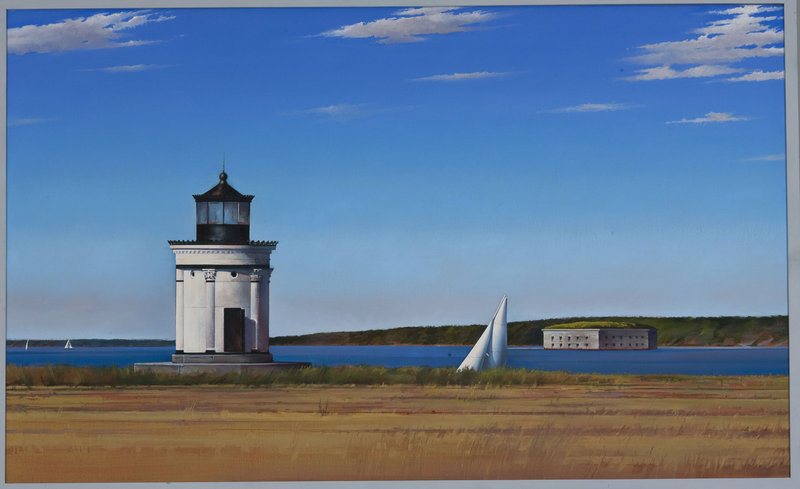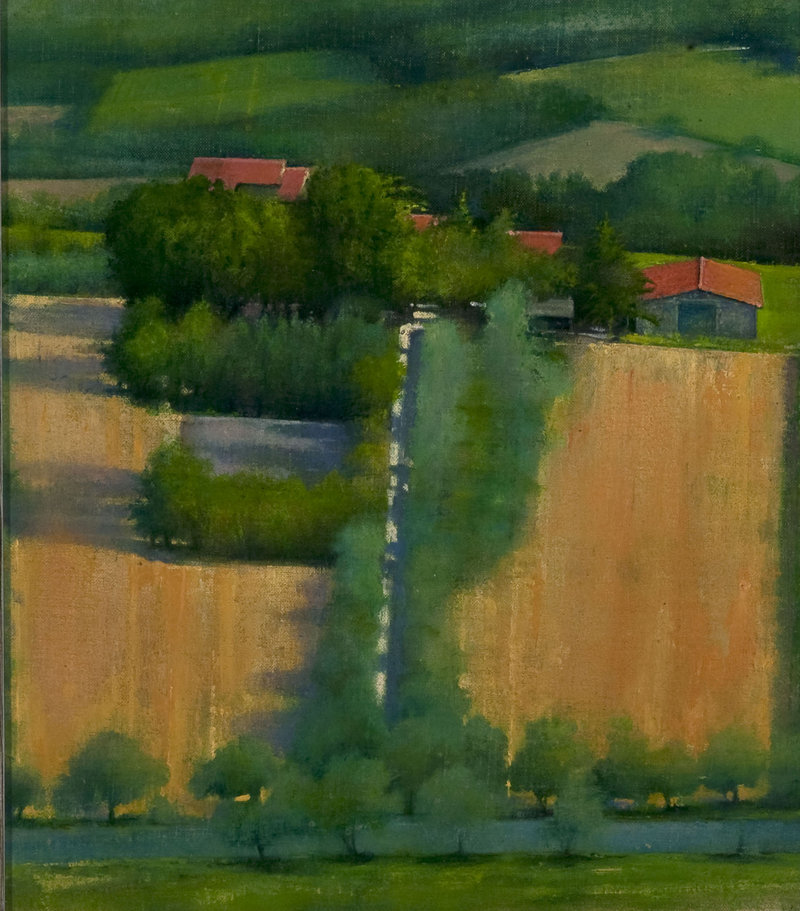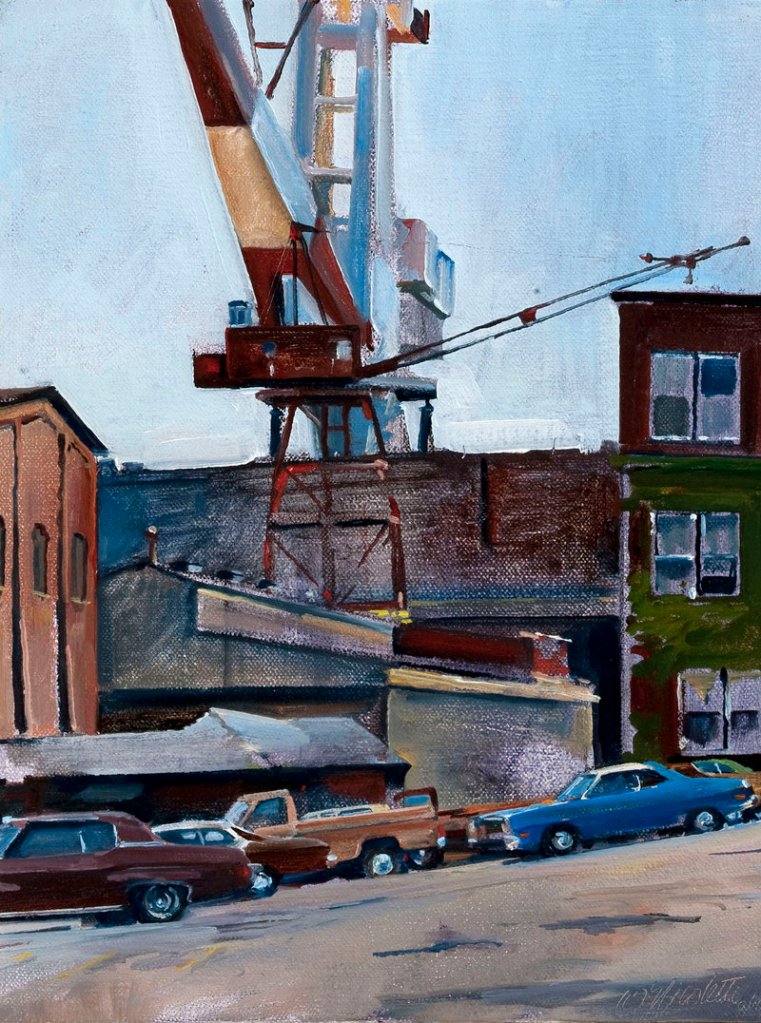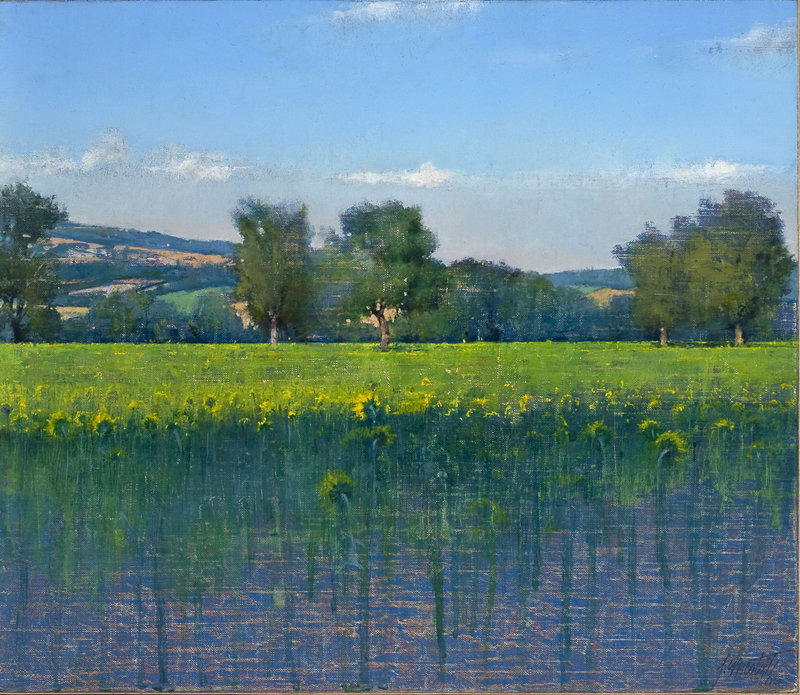SOUTH PORTLAND – Joe Nicoletti almost blanches at the word.
“As soon as I heard it, I thought, ‘Oh, God, how much more time do I have?’ “
The word is “retrospective,” and it applies to a new exhibition opening soon at Bates College Museum of Art in Lewiston. Simply titled “Joseph Nicoletti: A Retrospective,” the exhibition examines the long career of the South Portland-based realist painter, covering 40 years and 60 pieces, mostly paintings.
“It’s a big statement,” the artist says, seated in his orderly studio at his home near Willard Square. “I think it means that I’ve been here a long time.”
The show focuses on the breadth of Nicoletti’s career, excepting a brief period when he worked as an illustrator. It is composed primarily of still-life paintings, landscapes and narratives, and reflects Nicoletti’s life in Maine and his extensive travels throughout Europe, mostly Italy.
The Nicoletti show opens Saturday and will remain on view through Sept. 25. Many works in the show come from private collections and have never been shown publicly. For Nicoletti, the process of organizing the exhibition — he and Bates curators Bill Low and Anthony Shostak collaborated to mount the show and prepare an extensive catalog — has felt something like organizing a reunion.
“It’s been interesting tracing back a lot of work and connecting up with people I knew years ago and lost touch with, and sending invitations to people I’ve not seen in 20 years and hoping they show up,” says Nicoletti, 62.
Nicoletti lectures at Bates and has been associated with the art department since 1981. In the world of Maine art, he has earned his reputation as an artist with an ability to draw or paint virtually any subject because of his commitment to the process of seeing and observing.
Those who have traveled with and spent time with him while he was painting describe his afternoon-long examinations of a single subject as painstaking and laborious. He considers every detail with his eye first, and gradually absorbs a scene with all his senses before committing it to ink, paint or pencil.
His consideration of a subject can be as exhausting and oftentimes more revealing than any photograph. His work is not just about the image. It’s about the surface and the color, and about the narrative that Nicoletti is telling, both publicly and personally.
For Nicoletti, looking back at the paintings in this show (some of which date to 1972) returns him to the time and place where he made them. “I look at the paintings and I can almost remember the day, the people who came up to me, the sounds and the smells,” he said.
He doesn’t expect viewers to have the same reaction, because they weren’t with him when he made his visual discoveries. But he hopes his paintings inspire some kind of emotional response, that his detailed and exacting commitment to the faithful rendering of a scene — be it a landscape, a still life, a portrait — elicits a reaction.
Nicoletti is a traditionalist in every sense of the word. He works on flat surfaces with 90-degree angles. Within that context, he explores a range of possibilities that suggest his knowledge of abstraction and modernism. But his work is firmly rooted in a traditionalist’s realistic approach to representational painting, Shostak said.
“I think something that viewers will see is this real sense of order throughout all of his work. The still lifes and landscapes in particular have a sense of finding some kind of order and beauty,” Shostak said.
The exhibition also should remind people what it means to be a painter during a time when almost anything qualifies as art, and almost anyone can define themselves as an artist. Nicoletti is an old-school painter who has never really done anything else.
He was born in Italy in 1947, and his family came to the United States by way of Canada when he was a youngster. He grew up in Queens, New York, earned his bachelor’s degree from Queens College, and in 1972 emerged from Yale with a master’s degree.
He arrived in Maine soon after.
Nicoletti’s education earned him a job as a lecturer in the art department at Bowdoin College in Brunswick. Later, he landed at Bates.
For the last few summers, he has worked as director of the International School of Painting, Drawing and Sculpture in Umbria, Italy, allowing him to develop his native roots and make art pilgrimages to see seminal works of art across Europe.
Back in 1972, he had no compelling reason to come to Maine, other than a job. His first trip here was to interview at Bowdoin.
“I was out of Yale and had a choice: Get a job or go to New York. That was at a time when you could go to New York and you could afford to live in Manhattan. I know people who did both,” he said.
Over the years, his friends in Manhattan have envied his life in Maine, while he has envied their lives in New York. In truth, Nicoletti has made a comfortable life for himself in Maine, and has no regrets about coming here or staying here.
His job allows him the luxury of taking the time to practice his passion while also keeping on top of trends and movements within contemporary art. He appreciates the opportunity to work on a college campus and to impart his wisdom to students.
Talking to the students about their work has helped remind him about what it takes to be an artist and make art that has a lasting impact.
“As a painter, all you can do is hope that your work helps the viewer understand something about the world they live in. If I’m successful, it’s an amazing thing,” Nicoletti says. “All great art, it seems like it’s done just for you, even if it was done 400 years ago.”
Staff Writer Bob Keyes can be contacted at 791-6457 or at:
bkeyes@pressherald.com
Send questions/comments to the editors.







Comments are no longer available on this story